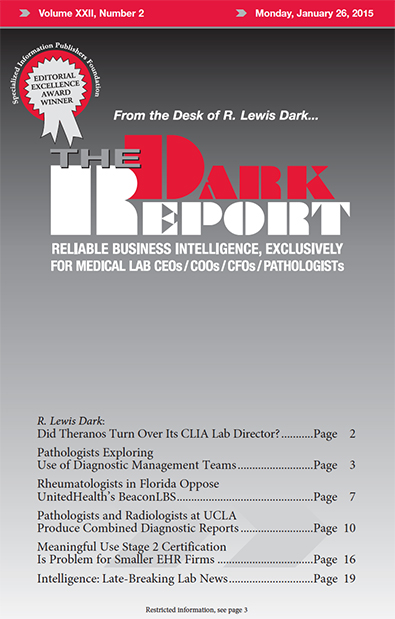CEO SUMMARY: EHR system vendors must now comply with the federal government’s Meaningful Use Stage 2 requirements. Well-established EHR vendors will survive. But smaller EHR companies may struggle to provide the enhancements to their first generation EHR products that are required to certify as MU Stage 2 compliant. These developments mean many physicians may need to find new EHR vendors. In turn, that will require clinical labs to build new interfaces to these physicians’ EHRs.
To access this post, you must purchase The Dark Report.


